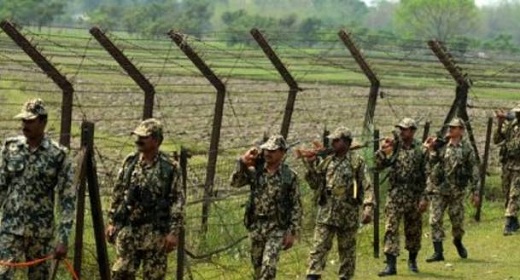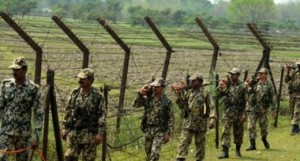
One Reason South Asia is Important to the ‘Rebalance’ to Asia: Climate Change
This morning, the House Committee on Foreign Affairs, Subcommittee on Asia and the Pacific held a hearing on the importance of South Asia in the U.S. ‘Rebalance” to Asia. Joseph Yun, the State Department’s acting Assistant Secretary, Bureau of East Asian and Pacific Affairs and Robert O. Blake, Jr. the Assistant Secretary, Bureau of South and Central Asian Affairs testified. Their prepared testimonies are here and here, respectively.
Often, we think of the re-balance, or ‘pivot,’ to Asia as a refocus to the Pacific in general, and China in particular. While this is self-evidently true, it does a disservice to the quarter of the world’s population that lives in India, Pakistan, Bangladesh, and other South Asian states. Yun’s testimony calls for the U.S. to view the Indian Ocean region and East Asia in a “coherent and integrated manner.”
A focus on South Asia is important because it is a region that is most likely to be harmed by climate change. In ASP’s ‘Climate Security Report‘, we find South Asia to be one of the “hot spots” who’s security is most likely to be affected by climate change. Both Yun and Blake note the importance of climate change in their prepared remarks.
Yun delves most deeply into it, saying:
Regional instability in South and Southeast Asia – brought on by interstate conflict, terrorism, proliferation of weapons of mass destruction, and non-traditional security threats, such as pandemic diseases, climate change, and environmental degradation – can pose a threat to the entire global economy.
He’s right. There are several specific threats posed by climate change and environmental degradation in the region, which our Climate Security Report highlights – and that policymakers like Yun and Blake in the State Department and their counterparts in the Defense Department should be aware of. For example, rising seas will put increasing pressure on low-lying regions: Bangladesh is almost 80% delta, and a rise of just 45 cm (easily within the predictions for coming decades) would cause a loss of 10.9% of the country’s territory. India is showing that they know the consequences: they’re building a border fence to keep migrant Bangladeshis out. Read the whole chapter of our report, here.
Another threat posed by climate change in South Asia is the melting of the ice caps in the Himalayas. In November, ASP released a report, The Dams of the Himalayas, that shows how rapidly the Tibetan Plateau is changing – temperatures have risen twice as fast over the last 30 years there than globally – and highlights a potentially dangerous development as the powers there build dams to collect and protect what water they do get. In this region, we are more closely aware of how closely almost half of humanity is linked: much of Asia – from Pakistan and Kazakhstan to China, Thailand, Vietnam or India – relies upon the water that emanates from the Himalayas. The security consequences of changes in water supplies are vast.
South and Southeast Asia are one of the areas most at risk of climate change. The sooner our national security professionals integrate this faction into planning, the more likely we can contain the damage.







[…] work on climate impacts in this region shows the important links between water, climate, conflict, US Policy, and regional security. Reporters should not overlook those […]
[…] work on climate impacts in this region shows the important links between water, climate, conflict, US Policy, and regional security. Reporters should not overlook those […]
[…] nations, particularly India and Pakistan, currently overshadow the troubling projected impacts climate change will have on the region. At the forefront of these issues is the increasing strain on water […]